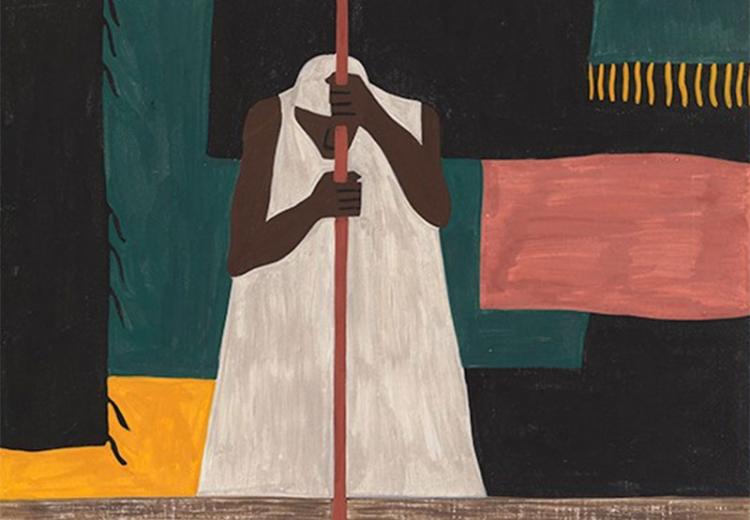Jacob Lawrence's Migration Series: Removing the Mask

Jacob Lawrence (1917–2000), The Migration of the Negro Panel no. 57, 1940–1941. Casein tempera on hardboard, 18 x 12 in. (45.72 x 30.48 cm.). Acquired 1942.
"Most of my work depicts events from the many Harlems that exist throughout the United States. This is my genre. My surroundings. The people I know . . . the happiness, tragedies, and the sorrows of mankind . . . I am part of the Black community, so I am the Black community speaking."
Jacob Lawrence, quoted in Modern Storytellers: Romare Bearden, Jacob Lawrence, Faith Ringgold by Stella Paul, Department of Education,The Metropolitan Museum of Art.
In this lesson, students describe and analyze Jacob Lawrence’s The Migration of the Negro Panel no. 57 (1940-41), Helene Johnson’s Harlem Renaissance poem “Sonnet to a Negro in Harlem” (1927), and Paul Laurence Dunbar’s late-nineteenth-century poem “We Wear the Mask” (1896). Focusing on composition, image, setting, characterization, and tone, students are invited to compare and contrast the works while considering how each work represents the life and changing roles of African Americans from the late nineteenth century to the Harlem Renaissance and The Great Migration. Dunbar’s symbol of the mask can help guide students’ understanding of these changing roles.
Guiding Questions
How do Lawrence’s painting, Johnson’s poem, and Dunbar’s poem represent the life and changing roles of African Americans during the Harlem Renaissance and The Great Migration?
Learning Objectives
Determine how visual elements in Lawrence’s painting establish tone and meaning.
Examine Johnson’s use of imagery and to determine how her word choices create characterization, tone, and meaning.
Evaluate Dunbar's use of symbolism to convey an argument about the role of African Americans in the late 1800s.
Consider and reflect on the historical context of Lawrence’s, Johnson’s, and Dunbar’s works.
Examine the extent to which the painting and poems comment on at least one aspect of life in America.
